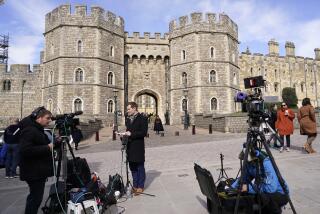Pardonnez moi, your majesty: Is this your severed head?
Doubt - and a reportedly royal severed head - haunts the world of scientific research these days, as European researchers squabble over an unearthed packet of mummified remains thought to have belonged to King Henri IV of France.
The mystery has produced a frightful case of regret among a pair of French researchers who were part of the first team to investigate the purportedly royal noggin. This week, the two wrote to the British Medical Journal and urged the retraction of the 2010 study that first identified the disembodied head as belonging to Henri IV.
At the heart of the grisly drama is an embalmed head with several vertebrae still attached. The remains were found in 1919 in the Royal Basilica of St. Denis in Paris, and almost a century later, the specimen’s soft tissue and organs were still intact, right down to the open mouth and partially closed eyes. On the basis of CT imaging and facial reconstruction techniques, French medical examiner and forensic osteo-archeologist Philippe Charlier and a multi-disciplinary team identified the severed head in 2010 as that of the charming and rakish monarch known variously as “the Green Gallant” and “Good King Henry.”
Even a mushroom-like growth on his nose, and evidence of a pierced right ear seemed to point to King Henri IV. Though beloved by most of his people, the Bourbon monarch was killed in 1610 after 21 years on the throne. (See a remarkable image of Charlier’s facial reconstruction here.)
That, it turned out, was just the beginning of his misfortune. In 1793, marauding French revolutionaries sacked Paris’ churches and desecrated the graves of many a purported royal. Legend had it that Henri’s remains got the same treatment that befell his descendant, Louis XVI: dead or not, it was off with his head.
But researchers from the University of Leuven in Belgium were not so sure the severed head belonged to Good King Henry. Obtaining a sample of the mummified tissue, they conducted a genetic analysis and compared it with samples given by three male descendants of the House of Bourbon. Analyzing the Y-chromosome of the three descendants, as well as genes that reveal matrilineal descent, they found clear similarities among the three descendants. But none of those matched the Y-chromosome or the published matrilineal data of the disembodied head.
The team further compared the Y-chromosome taken from the mysterious head found at St. Denis to that taken from a blood-soaked handkerchief said to contain the genetic material of King Henri IV’s descendant, Louis XVI. (That “sample” was collected on Jan. 21, 1793, when a spectator at La Place de la Revolution in Paris thrust out his or her kerchief to capture the blood gushing from the headless body of Louis XVI.) The DNA from Henri IV’s descendant Louis IV did not match that taken from the mystery head either.
Though widely used in genealogical research, paternity testing and forensics, the Y-chromosome’s “short tandem repeats” are not as definitive a test of genetic linkage as are so-called autosomal STRs. So perhaps this still was the head of Henri IV?
“Impossible!” cried Jean-Jacques Cassiman, an emeritus professor at the University of Leuven and coauthor of the Belgian team’s study, whose results were published in the European Journal of Human Genetics earlier this month.
The Belgian team’s findings came atop an earlier “non” issued by French historian Philippe Delorme. In a rigorous scolding titled “La Mauvaise Tete de Henri IV,” Delorme noted, among other things, that the head in question bore no sign of craniotomy, as would be typical for a member of the royal family at that time. In such an esteemed person, craniotomy incisions would have been made both in life - as a treatment for infection, head trauma and other ills - and in death, as a means to harvest “rondelles” - diskettes of bony tissue that were subsequently worn around the neck as an amulet.
“Bastard!” countered Philippe Charlier, the lead investigator of the original inquiry published in BMJ in 2010. His comments were directed not at Delorme or members of the Belgian genetics team, but at the French royals themselves. The common practice of dalliances, menage a trois and liaisons interdites among members of the French court make it “hopeless,” he said, to use genetic analysis to ascertain lineage over so many generations.
Such protests, however, have failed to discourage defections from Charlier’s original team of researchers. On Monday, the BMJ published a letter from two coauthors of the 2010 study, joined by Philippe Delorme and Jean-Jacques Cassiman, saying that “robust scientific arguments ... negate the conclusions” of the original inquiry published by the BMJ.
“The retraction of the article is now justified, as a rigorous scientific anthropological study should have excluded the hypothesis (and the findings) that the head belonged to Henri IV,” the foursome wrote.
No word yet on BMJ’s response.
ALSO:
Last Supper helpings have grown
Uncovered: Ritual public drunkenness and sex in ancient Egypt







